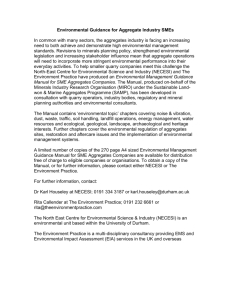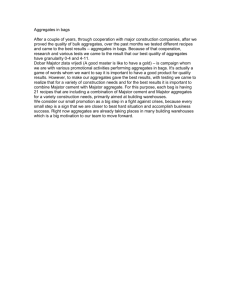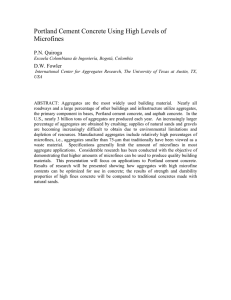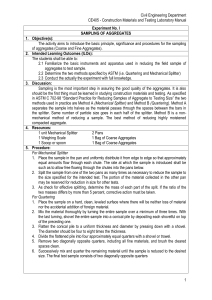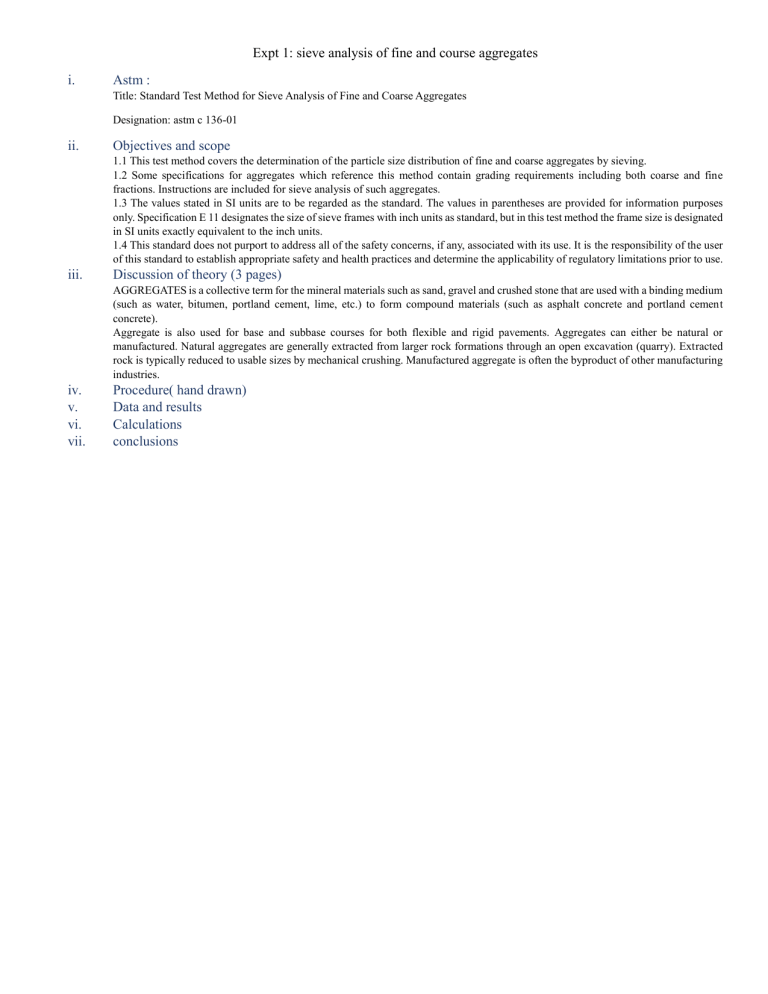
Expt 1: sieve analysis of fine and course aggregates i. Astm : Title: Standard Test Method for Sieve Analysis of Fine and Coarse Aggregates Designation: astm c 136-01 ii. Objectives and scope 1.1 This test method covers the determination of the particle size distribution of fine and coarse aggregates by sieving. 1.2 Some specifications for aggregates which reference this method contain grading requirements including both coarse and fine fractions. Instructions are included for sieve analysis of such aggregates. 1.3 The values stated in SI units are to be regarded as the standard. The values in parentheses are provided for information purposes only. Specification E 11 designates the size of sieve frames with inch units as standard, but in this test method the frame size is designated in SI units exactly equivalent to the inch units. 1.4 This standard does not purport to address all of the safety concerns, if any, associated with its use. It is the responsibility of the user of this standard to establish appropriate safety and health practices and determine the applicability of regulatory limitations prior to use. iii. Discussion of theory (3 pages) AGGREGATES is a collective term for the mineral materials such as sand, gravel and crushed stone that are used with a binding medium (such as water, bitumen, portland cement, lime, etc.) to form compound materials (such as asphalt concrete and portland cement concrete). Aggregate is also used for base and subbase courses for both flexible and rigid pavements. Aggregates can either be natural or manufactured. Natural aggregates are generally extracted from larger rock formations through an open excavation (quarry). Extracted rock is typically reduced to usable sizes by mechanical crushing. Manufactured aggregate is often the byproduct of other manufacturing industries. iv. v. vi. vii. Procedure( hand drawn) Data and results Calculations conclusions
